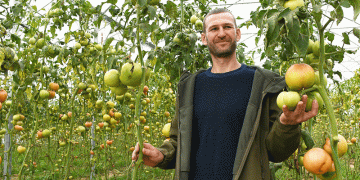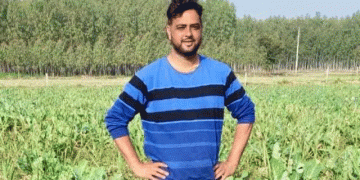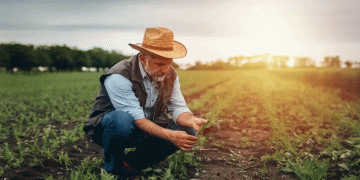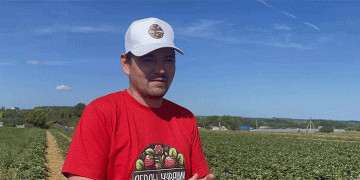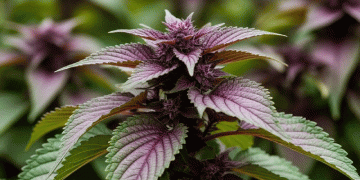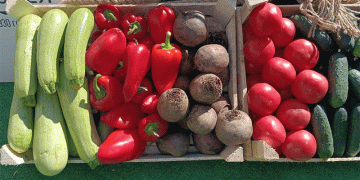If you’ve looked into a renewable energy source – solar, wind, geothermal or other – as a way to power your farm and decided it was too expensive, you need to look again. The money-saving potential is too big to ignore, said Jim Byrum, president of the Michigan Agri-Business Association.
“A lot of folks in the countryside will tell you it’s way too expensive because they looked at it a few years ago, but things are changing and changing rapidly,” he said.
Byrum spoke during “Powering Michigan Agriculture with Renewable Energy,” a conference held recently in East Lansing, Michigan. He said new technologies are creating opportunities that didn’t exist even a few years ago, and that renewable energy is more affordable than it used to be.
Citing a USDA statistic, Byrum said 30 percent of on-farm expenses are related to energy. That’s a variable cost that can be controlled. Something as simple as changing the light bulbs could cut your energy costs by a quarter.
Moreover, crop and livestock farms, food processing facilities and other agricultural operations require a lot of energy to run and are under more scrutiny these days regarding “sustainability.” Corporate America’s energy efficiency goals will push suppliers toward renewable energy with more force than any government regulation ever could, Byrum said.
“I used to think sustainability meant you had to make enough money so you could farm next year,” he said. “That definition has changed a little bit.”
These days, corporate citizens are looking at renewable energy not as an option but as a mandate, and many of these efforts will track down to their suppliers, including farmers, he said.
But there’s good news. USDA and other government programs have aid available for on-farm renewable energy projects, and installation costs for things like solar and wind have plunged. Challenges remain, however, in Michigan and elsewhere. Most farms are located in rural areas, where limited access to energy has hampered growth, Byrum said.
To learn more about renewable energy programs in your area, get in touch with your local power utility, he said.
“We in agriculture have to communicate more effectively with utilities about what our demands are, and also what our opportunities are,” Byrum said.
Solar
Ken Zebarah, a sales manager for Harvest Energy Solutions, laid out the advantages of going with solar power. Solar energy is cheaper and more efficient than it used to be. The government provides support in the form of grants and tax credits. Michigan utilities also offer various incentives. He said a typical grower could recoup his initial investment within four to eight years.
Most solar panels have a warranty of 25 to 30 years and require little maintenance. Panels can be mounted on all kinds of physical structures, and are scalable if you want to expand in the future, Zebarah said.
Before going with solar, however, let a professional study your electric bill and make a financial analysis. Figure out how much physical space the panels will take up, and make sure the tax incentives will benefit you, he said.
Once you pull the trigger, the entire process – including paperwork, procurement, installation and interconnection – can take more than a year, Zebarah said.
Wind
Steve Harsh, an Extension specialist with Michigan State University (MSU), said small-wind energy systems can offset on-farm electricity costs, but it’s important to evaluate how much wind you have in your location. Your farm needs wind speeds of at least 10 to 12 miles per hour (there are companies that can measure wind speed) to make a turbine worth your while, he said.
To install a small-wind turbine, you have to clear a lot of administrative hurdles: municipal zoning and building, insurance and grid connectivity, to name a few. On the plus side, laws passed in Michigan six years ago make it much simpler to connect to the power grid, Harsh said.
You need roughly 1 acre of land for a small-wind turbine, and a setback from your property lines of about 1.25 acres (turbines do fall over, in some cases). You don’t want a lot of buildings and trees nearby. And you probably want to check with your neighbors before putting up a turbine, Harsh said.
Geothermal
Timothy Schultz, president of Terra Caloric, which installs large-scale geothermal (heat from the earth) systems, discussed a hybrid solar/geothermal approach for rural residences.
“Solar’s getting all the attention, but geothermal can make solar a much smarter investment,” Schultz said.
With the hybrid approach, you tap into the sun and the earth, drawing power from above and below. You can get all of your power from geothermal alone, of course, but the invasiveness and cost of the initial installation has always been the industry’s Achilles heel, he said.
“No one questions the technology,” Schultz said. “It’s outstanding. But we’ve got to address that core issue.”
He said there are about a million wells in Michigan – a vast, untapped resource for geothermal power. A small geothermal system could tap into those wells and basically cut energy costs in half – not to mention help the environment, he said.
Anaerobic Digestion
Dana Kirk, an assistant professor with MSU, discussed anaerobic digestion, the biological process in which microorganisms break down biodegradable material. End products of anaerobic digestion include methane, biogas and digestate, which can be used as a fertilizer. Biogas can be combusted to generate heat and electricity, or can be processed into natural gas and vehicle fuel.
Kirk said there are seven operating anaerobic digesters on Michigan farms, digesting manure from roughly 40,000 dairy and swine and producing between 3.2 and 3.6 megawatts of electricity. The digesters are reducing carbon dioxide emissions by about 50,000 metric tons a year.
The U.S. dairy industry wants to install 1,500 digesters on dairy farms across the country, with the goal of reducing the carbon footprint of milk production, he said.
There’s also a tremendous opportunity in food processing waste, which is much more energy-dense than manure. Michigan generates at least 800 to 1,000 tons of food waste per day. If digested anaerobically, that waste could produce a tremendous amount of energy. Otherwise, it ends up in a sewer pipe or on a truck headed to a landfill, Kirk said.
Bioenergy crops
Bioenergy crops – oriental mustard, canola, switchgrass, etc. – are used to produce bioenergy in the form of solids (biomass) and liquids (biofuels). Bioenergy crops are an opportunity for Michigan agriculture, but they probably don’t belong on the most productive farm land. They could be grown on marginal land, however – of which the state has plenty, said Charles Gould, an MSU Extension educator.
Gould mentioned buffer strips and filter strips and land along waterways. He said there are 17,000 acres within state gaming areas, 5,000 acres in Detroit and more than 1,200 in Flint. There are hundreds of acres of marginal land around municipal airports. There might be 9,000 to 12,000 acres of highway right-of-way land in the state. But there are barriers to using these lands, he said, including poor soils and state and federal authorities that are hesitant to allow access.
There are other challenges to planting bioenergy crops. There are no registered herbicides for some, so exemptions are needed to control weeds. There’s also a general lack of knowledge about how to grow certain crops, and Michigan lacks adequate processing facilities and supply chains, he said.
“There are opportunities, but work needs to be done for this to happen on a large scale,” Gould said.
— Matt Milkovich, managing editor















